How to Change the Size of Taskbar Icons in Windows 11 and 10
Part of the appeal of Windows is that you can apply various customization layers to fit your preferred way of handling productivity tasks. Microsoft knows what its user base wants, so they’ve been introducing subtle but noticeable changes to the task menu, widgets window, search field, and UI options.
If you think about it, you’re going to spend a lot of time be looking at the icons on your computer a lot, so you need to be comfortable with how big (or how small) they are.
The size of the icons on your computer needs to be just right – they shouldn’t be so big that they take up an unnecessarily large amount of space, and they shouldn’t be so small that you have to squint to make out the icons on your screen or have trouble tapping on them while using a touch screen.
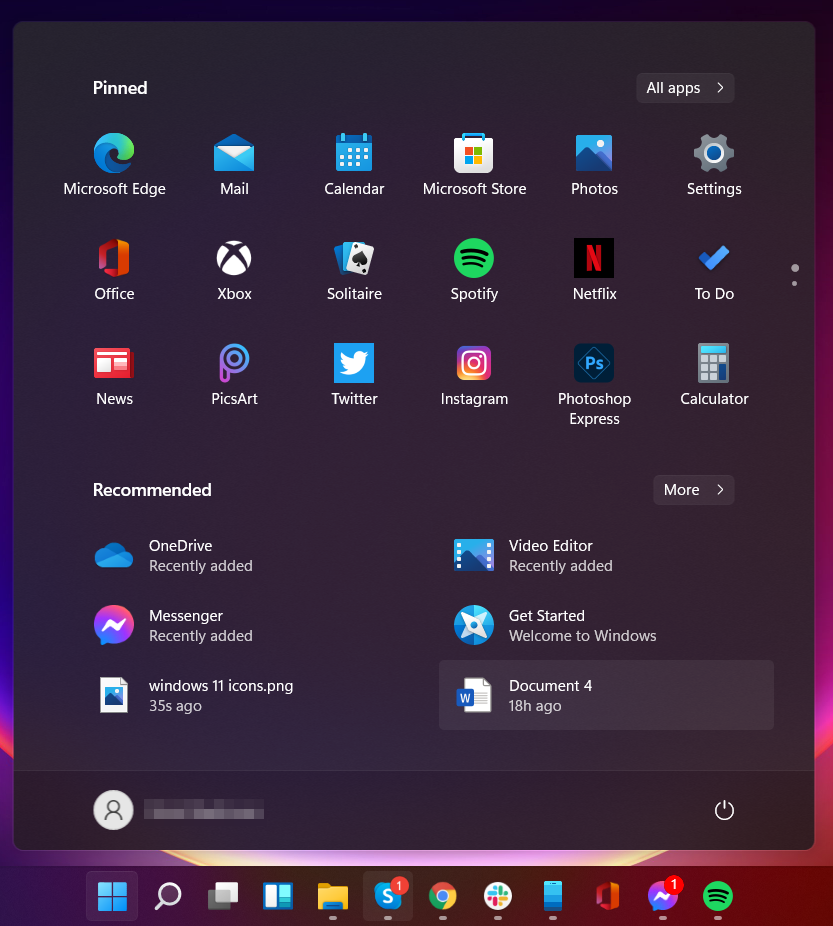
Well, Microsoft did things differently with their upcoming new OS (Windows 11) since it has no UI menu option allowing you to resize the taskbar (but you still can do it using a quick & easy registry modification).
Thankfully, though, if you’re still using the latest stable OS iteration, Windows 10 gives full control over the size of icons to its users – you freely and seamlessly make all of the icons you see on your computer smaller – You can decrease the size of not only the icons on your Desktop but also the ones located in your Taskbar and all of the icons within any given folder on your computer.
To make matters easier for you, we’ve put together a series of guides that will show you how to change the size of the taskbar icons regardless if you’re still on Windows 10 or you have already migrated to the newer version (Windows 11).
Here’s how you can make the taskbar, desktop and File Explorer icons appear larger or smaller (depending on your preferences) on Windows 10 and Windows 11:
Change the Size of Windows 11 icons
Desktop icons
- Similar to Windows 10, you can adjust the desktop icon size on Windows 11 by right-clicking anywhere on your desktop and accessing the View option cluster.

Accessing the View option cluster - From the View context menu that just appeared, go ahead and select from the 3 available options: Large icons, Medium icons and Small icons.

Select an icon size for your desktop icons on Windows 11 - As soon as you select a different desktop icon size, the changes will be enforced instantly, so there’s no need to restart your Windows 11 PC.
Taskbar Icons
Since there’s no native option of changing the taskbar icon size on Windows 11 (as of now), you will have to use a registry tweak to get the job done.
To do so, follow the instructions below:
- Press Windows key + R to open up a Run dialog box. Inside the text box, type ‘regedit’ and press Ctrl + Shift + Enter to open the Registry Editor with Admin access.

Open Registry Editor on Windows 11 via Run box Note: When you see the UAC (User Account Control) prompt, click Yes to grant administrative privileges to the Registry Editor program.
- Once you’re inside the Registry Editor, use the left-hand side to navigate to the following location:
HKEY_CURRENT_USER\Software\Microsoft\Windows\CurrentVersion\Explorer\Advanced
Note: You can either navigate to this path manually or you can paste the location directly into the navigation bar at the top and press Enter to get there instantly.
- Once you’re inside the correct location and you’re certain that the Advanced key is selected, move over to the right-hand side menu, right-click on an empty space and choose New > Dword (32-bit) Value.
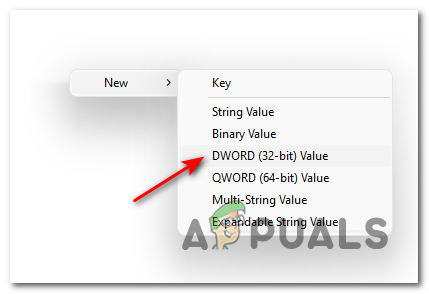
Creating a new DWORD value - Once the resulting Dword key is created, right-click on it and rename it to TaskbarSI.
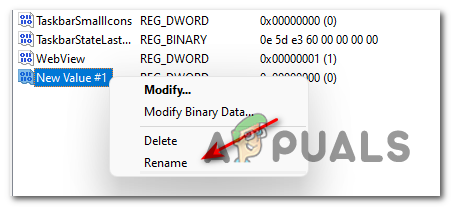
Renaming the TaskbarSI value - Once the newly created DWORD value is modified with the correct name, double-click on it.
- Next, set the Base to Hexadecimal, then set the Value Data field to one of these 3 values, depending on the taskbar size that you want:
Small Size - 0 Medium Size (Default) - 1 Larger Size - 2
- After you finally set the Value Data to the appropriate value (according to the icon size that you want), click Ok to save the changes.
- Reboot your computer and wait for the change to be enforced once the next startup is complete.
Note: If you’re not happy with the change you made, you can always retrace the steps above and set the value of TaskbarSI to a different one to adjust the size until you get it right.
File Explorer icons
- Open File Explorer and use the ribbon at the top to click on the Layout and view options icon.

Accessing the Layout and View options icon - Next, from the list of available options, select from the 4 different icon sizes for File Explorer: Extra Large Icons, Large icons, Medium icons and Small Icons.
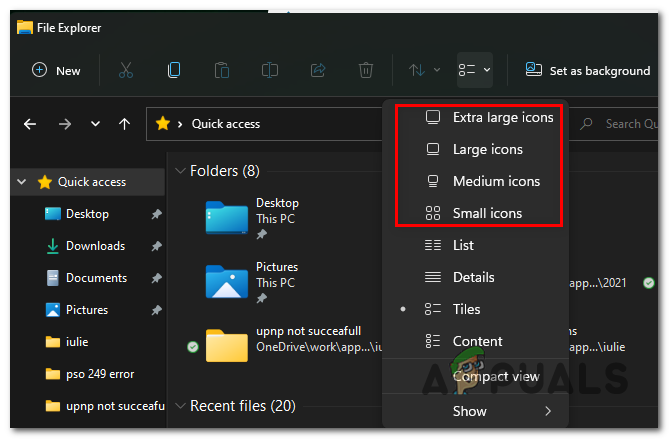
Choosing the correct icon size for File Explorer on Windows 11 Note: As soon as you select a different icon size for File Explorer on Windows 11, the changes will be instantaneous, so there’s no need to restart your computer.
Change the Size of Windows 10 icons
Desktop icons
- Navigate to your Desktop. Right-click in space on your Desktop.
- Hover over the View option in the resulting context menu.
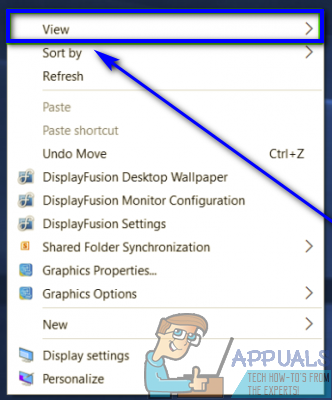
Click View in the menu - Select how small you want the Desktop icons to be – if the Large icons option was selected, select the Medium icons option and if that’s still too big, go for the Small icons option.
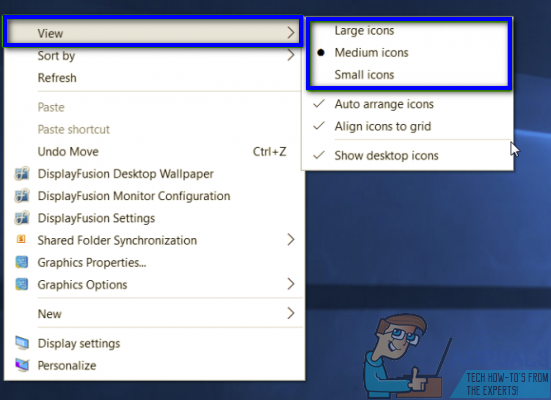
Select your View Options
Experience with the different Desktop icon size options Windows 10 has to offer varies from one user to the other, especially depending on the screen resolution of the user in question. It is worth noting that changing the size of the Desktop icons on a Windows 10 computer changes just that and nothing else.
Taskbar icons
- Navigate to your Desktop. Right-click in a space on your Desktop.
- Click on Display Settings in the resulting context menu.

Open Display Settings - Move the slider under the Change the size of text, apps, and other items option to 100%, 125%, 150% or 175%, whatever value is lower than the already selected one.

Adjust the slider to change the size of text, apps, and other items option Note: If Taskbar icons on the new value are still too large, simply switch to a value that is even lower than that one.
- Click on Apply.
- If Windows asks you if you’d like to keep the changes, confirm the action.
- If Windows asks you to log out and then back in so that it may be able to provide you with a more consistent experience, log out and then back into Windows.
- Also, you can use another approach to resize the Taskbar icons on Windows 10, to do so, right-click on your Taskbar and then click on “Taskbar Settings“.
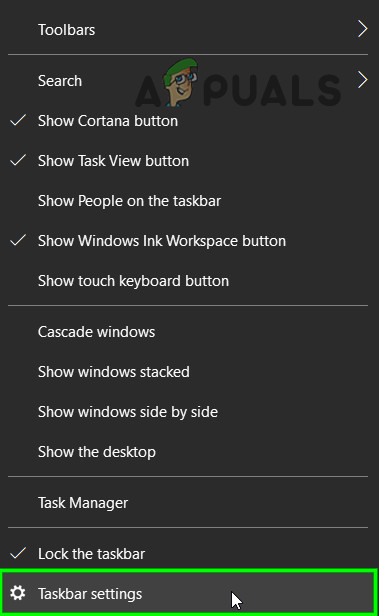
Open Taskbar Settings - In the left pane of the window, find “Use Small Buttons” and toggle its switch to on position.
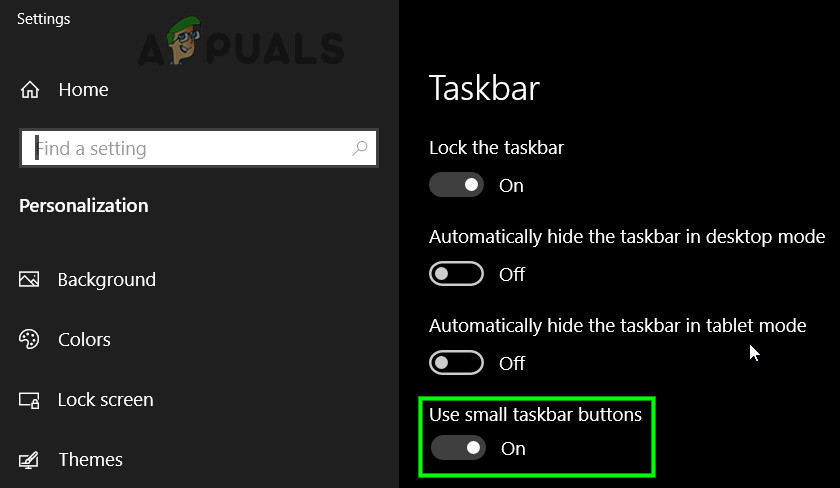
Enable “Use Small Buttons Option”
You should know that decreasing the size of Taskbar icons on Windows 10 will also decrease the size of the text in apps like Microsoft Edge and Calendar, as well as text in notification windows.
Icons in File Explorer
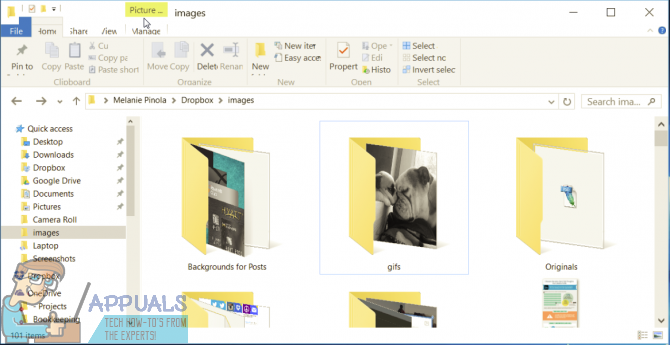
The other remaining area of Windows 10 where you see icons is the File Explorer.
In File Explorer, you can control the size of icons (and even how they are displayed to you) by simply pressing the Ctrl key and with it still held, scrolling down on your mouse’s scroll wheel. As you scroll down on your mouse’s scroll wheel, the icon size and display settings go from Large icons to Medium icons to Small icons to List to Details to Tiles and to Content.
Note: You can decide not only how small the icons in the File Explorer are but also how they are displayed and if any other information is displayed with them.
However, you should note that icon size and display manner in File Explorer is a folder-specific setting – while Windows will remember your icon size and display manner settings for a specific folder, those settings will only be applied to that specific folder, not to its parent folder, not to its child folders, and not to any other folders in File Explorer. This means that you are going to have to adjust icon size for different folders in File Explorer individually.